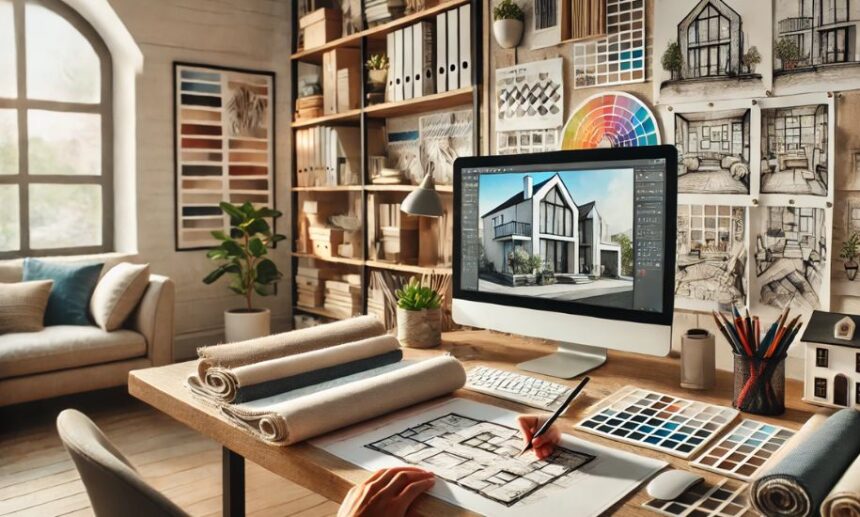If you’re wondering, “How do I become an interior designer?” you are not alone. Interior design is a highly creative and dynamic profession that attracts people with a keen eye for aesthetics, attention to detail, and a passion for transforming spaces. At Buddie Hun, we believe that pursuing this career path requires dedication, education, and creativity. In this article, we’ll guide you through the steps necessary to become an interior designer and explore the skills you need to succeed.
What Does an Interior Designer Do?
An interior designer is responsible for creating functional and aesthetically pleasing indoor environments. This involves designing, planning, and coordinating various elements like furniture, color schemes, lighting, and materials. Interior designers work closely with clients to understand their needs and vision, ultimately turning their ideas into reality. Whether you’re designing homes, offices, or commercial spaces, your role as a designer is to harmonize function with style.
Understand the Role of Interior Designers
The first step in answering “how do I become an interior designer” is to fully understand what the job entails. As a designer, your responsibilities extend beyond just selecting furniture and colors. You must be able to create layouts, ensure accessibility, and comply with building codes. Working with contractors, architects, and suppliers is also common, so communication skills are essential.
At Buddie Hun, we emphasize that successful interior designers are not only creative but also possess technical skills like drafting, space planning, and computer-aided design (CAD) software expertise.
Obtain a Formal Education
When asking “how do I become an interior designer,” education is a critical component. Most professional interior designers hold at least a bachelor’s degree in interior design or a related field. Accredited programs will equip you with essential skills such as:
- Design theory
- Color theory
- Space planning
- Computer-aided design (CAD)
- Sustainability practices
During your education, you’ll also gain hands-on experience through design projects, internships, and studio work. Some programs may offer specializations in areas like residential design, commercial design, or sustainable design.
At Buddie Hun, we encourage aspiring interior designers to explore internships and practical training opportunities during their studies. These experiences can provide invaluable industry insights and help build your professional portfolio.
Develop Key Skills
Being successful in interior design requires more than just a formal education. You need to cultivate various skills that go beyond creativity. These skills include:
- Communication: As an interior designer, you’ll need to communicate your vision clearly to clients, contractors, and vendors.
- Problem-solving: Sometimes things won’t go according to plan, and you’ll need to come up with creative solutions.
- Attention to Detail: Small details can make a big difference in a design project.
- Time Management: You’ll need to juggle multiple projects and deadlines efficiently.
- Technical Skills: Proficiency in design software like AutoCAD, SketchUp, and Adobe Creative Suite is crucial for most designers.
Build a Portfolio
A portfolio is a must-have for any aspiring interior designer. It’s one of the most effective tools to showcase your skills, creativity, and style to potential clients or employers. When starting, you can include:
- Projects completed during your education
- Internships and work experiences
- Personal design projects
At Buddie Hun, we always recommend that designers continuously update their portfolios to reflect their best work. A well-curated portfolio will help you stand out in a competitive market and showcase your unique design approach.
Get Certified or Licensed (if necessary)
In many regions, obtaining certification or a license is part of the journey to becoming an interior designer. This requirement varies depending on where you live and work, but in most places, you may need to pass the National Council for Interior Design Qualification (NCIDQ) exam. The NCIDQ certification is a widely recognized credential that can boost your credibility and career prospects.
If you’re wondering “how do I become an interior designer with a license,” start by researching the regulations in your state or country. Some regions may require additional exams or qualifications, particularly if you want to work in specialized areas like healthcare or commercial design.
Gain Experience and Network
Experience is invaluable in the interior design field. The more projects you work on, the more you’ll learn and develop as a designer. In the beginning, you may work for an interior design firm, a construction company, or a design studio. The exposure to different projects, styles, and client needs will expand your understanding of the industry.
Networking is also vital for career growth. Attend industry events, join interior design associations, and participate in local design communities to connect with other professionals. Building a strong network can open doors to new opportunities and help you stay updated on industry trends.
At Buddie Hun, we encourage young designers to actively engage with the design community, attend trade shows, and stay current with emerging design trends.
Continue Learning and Stay Updated
Interior design is an ever-evolving field. Design trends, technology, and materials are constantly changing, and as a professional, it’s crucial to stay up to date. Continuing education is key to maintaining your competitive edge. You can attend workshops, pursue advanced degrees, or earn additional certifications in specialized areas like lighting design, sustainable design, or furniture design.
Remember, “how do I become an interior designer” is not just a question for beginners—it’s also about growth and lifelong learning.
Specialize or Start Your Own Business
Once you’ve gained experience, you may want to consider specializing in a particular niche, such as:
- Residential interior design
- Commercial interior design
- Sustainable design
- Hospitality design
Specializing can help you become an expert in a specific area and attract clients looking for that expertise. Alternatively, if you’re entrepreneurial, you might ask yourself, “how do I become an interior designer who runs my own business?” Starting your own interior design firm is a rewarding but challenging venture. You’ll need to manage not just design but also marketing, finances, and client relations.
Conclusion: Your Journey to Becoming an Interior Designer
So, how do I become an interior designer? The answer lies in education, skill development, experience, and continuous growth. At Buddie Hun, we believe that a successful career in interior design requires a blend of creativity, technical expertise, and perseverance. By following the steps outlined in this article, you can transform your passion for design into a fulfilling career.
Whether you want to work for a firm, specialize in a niche, or start your own business, the journey is exciting and rewarding. Stay dedicated, keep learning, and remember that every project is an opportunity to express your unique design vision.





